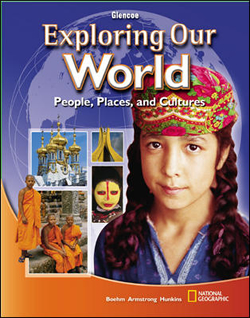
Exploring Our World: People, Places, and CulturesChapter 25: Physical Geography of East Asia and Southeast AsiaChapter OverviewsAbout 2 billion people, roughly one-third the world’s population, live in the region of East Asia and Southeast Asia. It is one of the mostly densely populated areas of the world. The vast region extends from the mountains of inland China to the Pacific shores of Japan. Tectonic late movements have created mountains and caused powerful earthquakes in parts of East Asia. Volcanic activity millions of years ago formed a chain of islands in the Pacific Ocean. East Asia’s only lowland areas are the North China Plain and the Manchurian Plain. Southeast Asia is south of China and has many peninsulas and thousands of islands. The mainland is crossed by cordilleras, between which are fertile river plains. Seas and rivers play an important role in agriculture and trade in the region. The region is surrounded by oceans and seas that have served as trade routes and have provided fish for food. The most important rivers in East Asia flow through China from the Plateau of Tibet to the Pacific Ocean. The Yellow and Yangtze rivers provide transportation routes and fertile land for agriculture. Southeast Asia’s rivers are located on the mainland. Most flow south toward the Gulf of Thailand, an arm of the South China Sea. An abundant supply of energy resources is found in the region. China, Indonesia, Brunei, and Malaysia have large oil deposits. China, North Korea, and Vietnam, among others, also mine coal. Several countries use hydroelectric power to meet their energy needs. The region also has a wealth of minerals, and some countries have timber. Wind patterns greatly influence the climates in East Asia and Southeast Asia. Three different air masses bring cold, dry air; cool, dry air; and warm, moist air to the region. In winter, cold winds sweep down from Siberia to the northern parts of the region. In summer, the southern part of East Asia receives warm Pacific air and monsoons rains. Ocean currents affect the climate, particularly for the islands of the region. East Asia generally has middle latitude climates like those in the United States, while Southeast Asia has mostly tropical climates. The mountain areas of Indonesia and China have highland climates. |  |















